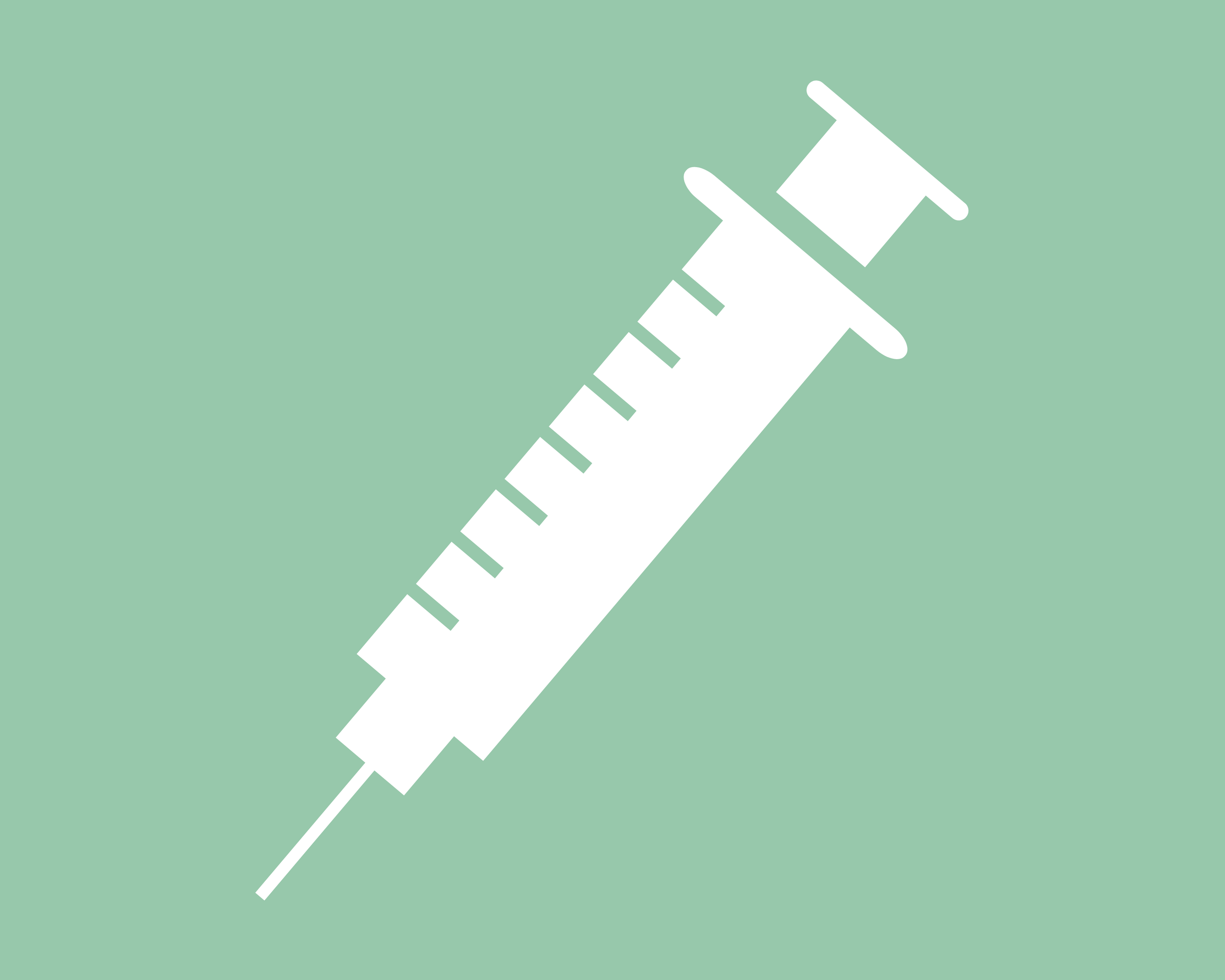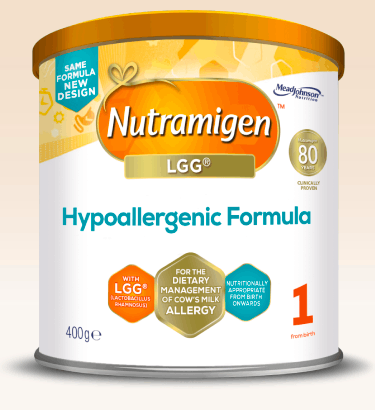Is my baby allergic to milk? A complete guide to diagnosing milk allergy
Written by Milk Allergy Specialist Christina Hills, a HCPC-registered private paediatric dietitian and founder of The Happy Feeding Company. With over 10 years’ experience in the NHS and private practice, she specialise’s in helping families feel confident and supported managing cows milk protein allergy and all other aspects of feeding babies and toddlers.
Is my baby allergic to milk? How do I know if milk is affecting my baby?
Those first few months of parenthood can be super challenging, and then throw into the mix an unsettled baby, with feeding challenges and a potential milk allergy! As a baby and child dietitian with 10+ years experience in managing milk allergy in newborns and babies, I have seen first hand many parents ask themselves these questions: ‘Is my baby allergic to milk?’ and ‘How do I know if milk is affecting my baby?’
If you suspect your baby has a milk allergy you are in the right place. On this page I am going to run through all things milk allergy in newborns, from symptoms, to diagnosis and management.
And remember. It might not always be a milk allergy, BUT all parents deserve to be listened to and given support with an unsettled baby, whatever to cause is. A baby who is unsettled and screaming after feeds IS NOT NORMAL. Blood in poo IS NOT NORMAL. Speak to your doctor if your baby has any of the symptoms listed below and are concerned. If milk allergy is suspected you should see a paediatric dietitian for ongoing management. Check out my virtual clinic where you can book a 45-minute consultation and get a tailored feeding plan followed by email support
What is cows milk allergy? What is milk allergy in infants?
What even is a milk allergy? Cow’s milk allergy (also called a milk allergy, cows milk protein allergy or CMPA, and- sometimes incorrectly - a milk intolerance) happens when your baby’s immune system responds to the proteins found in cow’s milk or cows milk based infant formula. Most infant milks in the UK market are made from cows milk. There are a few goat milk formulas now available and some plant-based milks are emerging globally, but the majority of formula fed babies will be drinking cows milk based infant formula.
How do I know if my baby bas a milk allergy?
What are the symptoms of milk allergy in babies? Symptoms of milk allergy in babies can vary but often include:
Skin reactions: Such as hives, eczema, or a milk allergy skin rash
Gastrointestinal issues: Including reflux, back arching, vomiting, loose or explosive poo, mucus, or blood in poo
Respiratory problems: Like wheezing or nasal congestion
These symptoms can appear within minutes to hours, or even days after consuming milk or milk-based products. It’s essential to consult a dietitian or GP if you suspect a milk allergy in your baby
How do milk allergy babies act?
Babies with a milk allergy may show signs of:
Irritability or excessive crying: Due to discomfort or pain
Feeding difficulties: Refusing feeds or showing distress during feeding or shortly after
Sleep disturbances: Frequent waking or difficulty settling at night
Get support now to identify the root cause of your babies symptoms
What is the difference between the types of milk allergy? IgE vs non-IgE milk allergy?
Food allergies in children can be broken down into two main types based on the parts of the immune system which are involved in the allergic reaction. These two main types are: Immunoglobulin-E (IgE) mediated and non-IgE mediated.
IgE-mediated reactions usually occur within 2 hours of eating or drinking milk. Both skin prick tests and specific IgE blood markers are available to guide the diagnosis of this type of food allergy, but an oral food challenge (OFCs) remains the most reliable method to confirms the diagnosis.
Non-IgE mediated allergies usually present around 2–72 hours after ingestion of the offending food allergen. These types of reaction mostly affect the GI tract and the skin. This delayed presentation of milk allergy is very common, with data from the United Kingdom (UK) indicating that almost 60% of children with cow's milk protein allergy present with delayed GI symptoms and/or skin conditions like eczema and other rashes.
What does a milk allergy rash look like?
What does baby skin look like with a milk allergy? A milk allergy rash often presents as red patches or bumps on the skin, they can be itchy, or hive like. The rash might be accompanied by swelling of the lips, face, or eyes, or a tingling or itchy feeling in the mouth. You may also see moderate to severe “baby acne” on the face. Milk allergy can also present as worsening of existing eczema in some babies too.
What are the chances of a baby having a milk allergy?
Cow’s milk allergy is one of the most common food allergies in babies. We do not know the true percentage of babies with milk allergy because many of the studies which looked into this have enrolled babies past weaning age and therefore many babies have outgrown their milk allergy by this time. Studies indicate that approximately 2-3% of babies are affected, but in reality I feel it is probably much greater than this. The likelihood of a milk allergy increases if there’s a family history of allergies or if the baby has other allergic conditions like eczema. Most cases of cow’s milk allergy develop before in babies before they turn one and usually before they are 6 months if they are formula fed.
How do you test for a milk allergy?
The way to test for milk allergy differs depending on the symptoms which your baby has. If the symptoms are severe then you may be advised to avoid all dairy and come into hospital for testing, if the symptoms are milder or more delayed (like in non-IgE type milk allergy), then it may be safe to do an exclusion diet followed by a reintroduction at home. Read more about reintroducing cows milk to confirm diagnosis here. In some cases- for example in suspected IgE type milk allergy- a milk allergy test like a skin prick test may be conducted to identify specific allergens or a hospital supervised food challenge.
Diagnosing a milk allergy involves:
Allergy focused history: Documenting symptom profile and a feeding history
Elimination diet: Removing milk from the baby’s diet to observe symptomatic response
Food challenge, blood test or skin prick test: Reintroducing milk under medical supervision to monitor reactions.
In some cases, a milk allergy test like a skin prick test or a RAST blood test may be conducted to identify specific allergens or a hospital supervised food challenge.
Milk allergy vs. lactose intolerance: What’s the difference?
What is the difference between lactose intolerance and cows milk allergy? It’s crucial to distinguish between a milk allergy and lactose intolerance as the treatment differs. Milk allergy happens when your baby’s immune system responds to the proteins found in cow’s milk or cows milk based infant formula. Lactose intolerance happens when the gut does not have enough of the enzyme (lactase) required to digest lactose, this results in loose poo and tummy pain. Lactose intolerance is rare in babies, but sometimes can occur temporarily after a gut infection and usually resolves. Children with lactose intolerance can consume lactose free milk products like lactose free milk, yoghurt and cheese. Babies with milk allergy must avoid all dairy products, even those labelled lactose-free.
At what age do children outgrow milk allergy? Do babies outgrow milk allergy?
Many parents wonder: can milk allergy disappear - and the answer is: yes! This is the good news bit- most babies will outgrow their milk allergy, with around 50% being able to tolerate cows milk again by the age of 1, more than 75% by the age of 3 years, and over 90% by 6 years of age. Babies with non-IgE milk allergy are more likely to outgrow milk allergy than those with IgE type allergy.
Constipation + milk allergy
Can milk allergy cause constipation? Can cows milk cause constipation?
Yes, while loose poo and poo explosions are a common symptom of milk allergy, some babies with a milk allergy may experience constipation. This occurs due to inflammation in the GI tract caused by the allergic reaction.
Can dairy cause constipation in breastfed babies?
Yes this is a symptom of milk allergy in breastfed babies, along with other symptoms like skin rashes, eczema, reflux and blood in poo.
What does milk allergy poop look like?
The poo of babies with a milk allergy may be:
Loose, watery or frothy: Explosive, or loose watery poo can indicate gut irritation
Mucusy and sometimes green/light green: Due to gut inflammation
Bloody: sometimes milk allergy poo can also have flecks of blood present
Hard: sometimes milk allergy can cause constipation, and straining to pass a hard poo
If you observe any of these milk allergy in newborn poop symptoms, seek advice!
Reflux + milk allergy
How do I know if my baby has reflux or milk allergy? Can reflux be mistaken for milk allergy?
This is a complex one, because babies can have milk allergy with symptoms of reflux, or just reflux, or both. Reflux involves the back flow of stomach contents, leading to spitting up. Many babies will ‘spit up’ and this is not necessarily problematic. But when the spitting up is associated with pain, discomfort, back arching and general irritability, and sometimes poor weight gain, this could be a sign of gastro-oesophageal reflux disease (GORD). Reflux itself is a symptom, and can be triggered by all number of things, including feeding issues and also milk allergy. If the reflux is caused by a milk allergy the symptoms should settle completely on a milk free diet. If a baby has both reflux and milk allergy then an elimination diet will not completely resolve the reflux symptoms. It is always best to get 1:1 support to identify the root cause of your babies symptoms
What is the treatment for milk allergy?
Management involves avoidance of dietary cow’s milk protein and advice on sufficient dietary calcium, iodine, and vitamin D. All suspected cow’s milk allergy cases should be referred to a paediatric dietitian to monitor growth and nutrition and advise on dietary exclusions and reintroductions.
Can you breastfeed with a milk protein allergy? Can dairy be passed through breastmilk? Is my breastfed baby allergic to dairy in my milk?
Firstly, it is essential to use every possible opportunity to promote breastfeeding amongst the mothers of infants suspected of milk allergy. In answer to the question ‘can dairy be passed through breastmilk?’, the answer is yes: Small levels of lactoglobulin are found in human breastmilk of mothers consuming cow’s milk products in her own diet. But, only a small number of babies react to the cows’ milk protein found in maternal breastmilk
If a baby with milk allergy displays symptoms whilst breastfeeding then the breastfeeding mother will need to follow a cow’s milk free diet while ensuring their diet contains sufficient dietary calcium and iodine, alongside 10 micrograms (400IU) of vitamin D to support calcium absorption as recommended for all breastfeeding women in the UK. If symptoms only occurred with formula top ups then the mum may not need to do so. A dietitian will work through the allergy history and advise whether a milk free diet for the breastfeeding mum is required.
How is non-IgE milk allergy treated?
For suspected non-IgE mediated allergy a trial elimination of all cow's milk from the infant's diet (and the mother’s diet, only if suspected reaction via breast milk exposure) (NICE, MAP, BASCI). Following this, a home reintroduction of cow's milk is needed to confirm the diagnosis- this is essential to confirm diagnosis (MAP). Once confirmed, the infant would usually need to follow this diet until 9-12 months, and for at least 6 months. This would then be followed by a home reintroduction of cow’s milk guided by a dietitian (provided this is safe to do so) using a milk ladder. Re-evaluation to check for tolerance can be done every 6-12 months
How is IgE milk allergy treated?
A strict cows milk free diet is usually recommended followed by referral for allergy testing, either a blood test or skin prick testing. These allergy tests require specialist interpretation as both can demonstrate high sensitivity, but low specificity, and therefore can be positive in non-allergic subjects. Sometimes a hospital supervised food challenge is required if results are not clear from initial testing. After review by an allergy specialist, it may be advised that some forms of cows’ milk are safe to consume such as baked milk products, but this should not be done without professional guidance and only if it is deemed safe to do so.
How long after cutting out dairy will my baby feel better?
How long does it take milk allergy symptoms to go away? Improvement in symptoms can vary depending on the type of reaction. Many parents report symptoms settling within 12 hours or within a few days, whereas some symptoms like eczema or gastrointestinal issues, may take 2-4 weeks to improve after eliminating dairy.
What formula is suitable for babies with milk allergy?
If your baby has a milk allergy the best form of treatment is exclusive breastfeeding until 6 months of age- possibly alongside a milk-free diet for the breastfeeding mother if this is needed. If you choose to give formula in place of- or alongside- breastmilk, or if you are not able to breastfeed, then a specialist milk allergy formula is recommended. Standard off-the-shelf formulas are not suitable for babies with a milk allergy as they contain in tact milk proteins.
Milk allergy formulas are still made with cows milk- but the proteins in them are broken down by enzymes which makes them less allergenic. Depending on their processing level, they are classified as either extensively hydrolysed or amino acid formulas, sometimes shortened to eHF or AA, respectively.
Amino acid formulas are not generally recommended as first line for babies with a milk allergy unless there are severe symptoms, like anaphylaxis, or a history of growth faltering. Here is a breakdown of the formulas available in the UK currently. Always, consult your dietitian to determine the best formula for your baby.
Breakdown of formula for cow’s milk allergy in the UK:
Extensively hydrolysed formula (eHF): The milk proteins are broken down, making them easier to digest and less reactive than regular cow’s milk-based formula (Examples: Althera, Nutramigen, Aptamil Pepti)
Amino acid-based formula (AAF): For more sensitive babies, these formulas are even more broken down, making it harder for the immune system to recognise the protein (Examples: Neocate, Alfamino)
Goat’s milk formula for milk allergy?
🐐 Goat’s milk contains similar proteins to cow’s milk and so is not usually suitable for babies with milk allergy as most babies with a milk allergy will also react to goat’s milk, especially for those with IgE mediated milk allergy, therefore these should generally be avoided in the first instance with all moderate to severe milk allergy reactions. However, there is some evidence that goats milk may be tolerated in those with mild gut symptoms with non-IgE mediated milk allergy.
Soy formula for milk allergy?
Many of those with cow’s milk allergy will also react to soya proteins found in soya products like soya milk and soya infant formula. This is thought to affect those with delayed gut symptoms more than those with IgE-mediated cow’s milk allergy. Soya formula should be avoided until at least 6 months of age due to concerns regarding the high concentration of phytoestrogens relative to small body size and possible impact on the growing infant. Soya formula is not currently available to buy in the UK.
What guidelines are used to manage milk allergy in babies in the UK?
In the UK there are several guidelines that healthcare professionals will use to support the diagnosis and management of cow’s milk allergy in infants:
BSACI: Guideline for the diagnosis and management of cow’s milk allergy. 2014. Clinical & Experimental Allergy, 44, 642–672. Link here
Nice clinical guideline: Food allergy in under 19s: assessment and diagnosis. Clinical guideline [CG116] Published: 23 February 2011. Link here
MAP guideline: Fox et al. An update to the Milk Allergy in Primary Care guideline. Clin Transl Allergy (2019) 9:40 Link here
EAACI: Diagnosis and management of non‐IgE gastrointestinal allergies in breastfed infants - an EAACI Position Paper Link here
What do I do if I think my baby has a milk allergy?
Identifying and managing a milk allergy in infants requires careful observation and collaboration with a dietitian and other healthcare professionals. If this sounds like your little one get support now to identify the root cause of your babies symptoms
Get support from a private dietitian for milk allergy
I’m Christina Hills, a HCPC-registered Paediatric Dietitian with over 10 years’ NHS experience and a specialist interest in milk allergy, food allergies and milk challenges. Through my private practice at The Happy Feeding Company, I provide tailored support for babies and children with milk allergy and their families. Explore the clinic or book a 1:1 now.
Note: This blog post is for informational purposes only and does not substitute professional medical advice. Always consult with a healthcare provider for personalised guidance.












